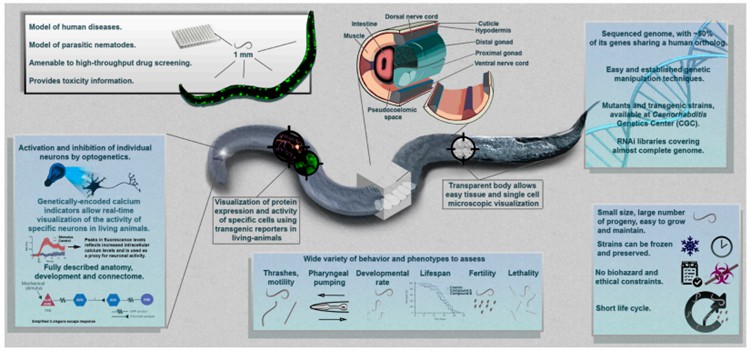Embracing the Future: The Rise of Machine Learning Operations in Artificial Intelligence
Artificial Intelligence (AI) is no longer a futuristic concept; it has become an integral part of our daily lives. From smart assistants like Siri and Alexa to recommendation systems on Netflix and Amazon, AI is everywhere. As AI technologies evolve, Machine Learning (ML) has emerged as a core component driving this transformation. Among the myriad of advancements in the AI landscape, Machine Learning Operations (MLOps) is gaining significant traction. This article delves into the intricacies of MLOps, its impact on the AI ecosystem, and why businesses need to hire app developers skilled in this domain. Additionally, we will explore the burgeoning field of Natural Language Generation (NLG) and its potential to revolutionize content creation.
Understanding Machine Learning Operations (MLOps)
MLOps is a set of practices that combines ML, DevOps, and data engineering to deploy and maintain machine learning models in production reliably and efficiently. It addresses the challenges of operationalizing ML models, including model versioning, monitoring, and scalability.
-
Key Components of MLOps
Model Development: This phase involves data collection, preprocessing, feature engineering, and model training. Tools like Jupyter Notebooks and frameworks such as TensorFlow and PyTorch are commonly used.
-
Model Validation: Before deployment, models must be validated to ensure they perform well on unseen data. This step includes cross-validation, hyperparameter tuning, and model evaluation.
-
Deployment: Deploying models to a production environment requires integration with existing systems and ensuring low latency and high availability. Containerization technologies like Docker and orchestration tools like Kubernetes are often employed.
-
Monitoring and Maintenance: Post-deployment, models need continuous monitoring to detect performance degradation due to changes in data patterns. Tools like Prometheus and Grafana are used for monitoring.
-
Versioning and Retraining: As new data becomes available, models need to be retrained and updated. Version control systems like Git help manage different model versions.
The Importance of MLOps
MLOps ensures that ML models are scalable, reliable, and maintainable. It bridges the gap between data scientists and operations teams, facilitating smoother and faster deployment of models. By implementing MLOps, organizations can achieve:
- Reduced Time-to-Market: Automated workflows speed up the development and deployment process.
- Improved Model Accuracy: Continuous monitoring and retraining help maintain model performance.
- Operational Efficiency: Streamlined processes reduce the manual effort involved in managing ML models.
Why Businesses Should Hire App Developers with MLOps Skills
As AI continues to permeate various industries, the demand for skilled professionals who can build and manage ML models is skyrocketing. Here are a few reasons why businesses should consider hire app developer with MLOps expertise:
1. Seamless Integration
Developers with MLOps skills can seamlessly integrate machine learning models into existing applications, enhancing functionality and providing better user experiences. Whether it’s a recommendation engine for an e-commerce app or a predictive maintenance tool for industrial machinery, MLOps ensures smooth integration and operation.
2. Enhanced Scalability
MLOps practices enable the development of scalable AI solutions that can handle increasing amounts of data and users. This scalability is crucial for businesses looking to grow and expand their AI capabilities without facing performance bottlenecks.
3. Cost Efficiency
By automating various aspects of the ML lifecycle, MLOps reduces the manual effort required, leading to significant cost savings. This efficiency allows businesses to allocate resources more effectively and invest in other critical areas.
4. Continuous Improvement
MLOps facilitates continuous monitoring and improvement of ML models. Developers skilled in MLOps can set up automated pipelines that retrain models with new data, ensuring they remain accurate and relevant over time.
5. Competitive Advantage
Businesses that adopt MLOps can quickly deploy innovative AI solutions, gaining a competitive edge in the market. By hiring developers with MLOps expertise, companies can stay ahead of the curve and capitalize on emerging opportunities.
The Role of Natural Language Generation (NLG) in AI
Natural Language Generation (NLG) is a subfield of AI that focuses on generating human-like text from structured data. It has applications in various domains, including content creation, customer service, and data analysis. NLG technologies can automatically generate reports, summaries, and even creative content, making it a valuable tool for businesses.
Applications of NLG
-
Content Creation: NLG can automate the creation of news articles, product descriptions, and marketing copy. This automation allows content creators to focus on higher-level tasks, such as strategy and creativity.
-
Customer Service: AI-powered chatbots and virtual assistants use NLG to provide personalized responses to customer queries. This capability enhances customer satisfaction and reduces the workload on human agents.
-
Data Analysis: NLG can transform complex data sets into easy-to-understand narratives. This transformation helps stakeholders quickly grasp insights and make informed decisions.
Benefits of NLG
- Scalability: NLG systems can generate large volumes of text in a short amount of time, making them ideal for businesses with high content demands.
- Consistency: Automated content generation ensures consistency in tone, style, and quality, which is crucial for maintaining brand identity.
- Personalization: NLG can tailor content to individual users based on their preferences and behavior, enhancing engagement and conversion rates.
Implementing NLG in Business Operations
To leverage the benefits of NLG, businesses need to adopt a strategic approach. Here are a few steps to successfully implement NLG:
1. Identify Use Cases
Determine the specific areas where NLG can add value to your business. This could be content creation, customer service, or data reporting. Clearly defining use cases helps in setting realistic expectations and goals.
2. Choose the Right Tools
Select NLG tools and platforms that align with your business needs. Popular NLG solutions include OpenAI’s GPT-3, Google’s BERT, and IBM’s Watson NLG. Evaluate these tools based on factors such as ease of use, integration capabilities, and cost.
3. Collaborate with Experts
Working with AI and NLG experts can significantly enhance the implementation process. These professionals can help design, develop, and deploy NLG systems tailored to your business requirements.
4. Monitor and Improve
Continuous monitoring is essential to ensure the NLG system performs as expected. Collect feedback, track performance metrics, and make necessary adjustments to improve accuracy and relevance.
Conclusion
The rise of Machine Learning Operations (MLOps) and Natural Language Generation (NLG) is reshaping the AI landscape. MLOps provides a robust framework for deploying and maintaining ML models, ensuring they deliver consistent and reliable performance. By hiring app developers skilled in MLOps, businesses can seamlessly integrate AI into their operations, enhance scalability, and achieve cost efficiency.
On the other hand, NLG is revolutionizing content creation, customer service, and data analysis by automating the generation of human-like text. Its ability to scale, maintain consistency, and personalize content makes it a valuable asset for businesses looking to enhance their communication and engagement strategies.
As AI continues to evolve, staying updated with the latest trends and technologies is crucial for businesses aiming to stay competitive. Embracing MLOps and NLG can unlock new opportunities, drive innovation, and propel businesses toward a future where AI-driven solutions are the norm.





